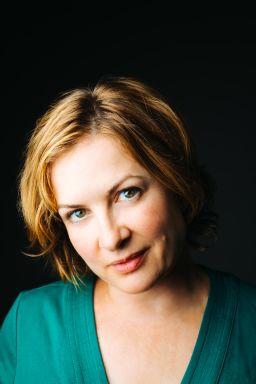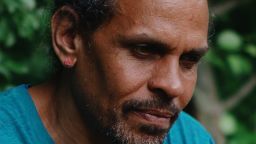Editor’s Note: Tess Taylor is the author of the poetry collections “Work & Days,” “The Forage House” and most recently, “Rift Zone” and “Last West: Roadsongs for Dorothea Lange.” Views expressed in this commentary are solely hers. Read more opinion articles on CNN.
As 2022 fades away and 2023 begins, you might be pondering what practices to begin in the new year, what intentions to set. Some intentions might arrive as a desire to work out more, have a dry January, lose weight; some might be a willingness to deepen or engage a new habit.

I wanted to share a practice that’s been useful to me, as a writer: To write a haiku, or a loose haiku, every day. For me this habit began in a dark phase, when I realized I just wasn’t getting much creative time. I was feeling depleted. The pandemic was on, my kids needed a lot and I felt brittle and far from my heart.
A long time ago, I had a poetry teacher at the 92nd Street Y, in New York City, Marie Ponsot. She had raised nine children as a single mother and had gone years without publishing a book of poems. She was a wonderful poet, and deeply wise. She urged everyone she met to nurture their own creative practice, each day. “You can always write one line of poetry,” she’d say. “You can always write one line.”
Her words came back to me during this strange hard year and I decided, from birthday to birthday, to mark each day with a version of that one line – a rough haiku.
What I mean by “rough” is this: My haiku didn’t have to be seventeen syllables exactly. It didn’t really have to be 5/7/5 the way sometimes people teach other people to make haiku.
Instead, I tried to follow guidelines that the poet Robert Hass has described as operating in the haiku of the wise practitioner Matsuo Basho: to include an image that would share the moment in time and an image that would let us know the season of the year.
Basho’s poems move between wider vistas and specific images like this:
A cool fall night—
Getting dinner we peeled
eggplants, cucumbers.
Or this:
Many nights on the road
and not dead yet:
the end of autumn.
I love how in the first poem, early fall is embodied precisely in seasonal eggplants and cucumbers; how in the second poem, many nights on the wild road become a figure for the autumn’s-end sense of needing to be home. I love the way these poems gain energy by rapidly shifting their scale. I decided I’d model my rough haiku after them. Each day, I’d find a precise image from the day, and an image from the wider arc of month or season. This practice would anchor me.
With this resolution, I was off and jotting. What surprised me was how much this tiny game unlocked a curiosity and energy in the weeks that followed. Maybe the haiku would come first thing in the morning, in minutes before email or coffee. Maybe a little verse would worm its way in between meetings. Maybe I’d notice a bird, dog, child or spider. Maybe I’d record the glinting puddle after the first California rain.
Whatever it was, I felt more buoyant, more watchful. Looking for the day’s haiku was a way of being present.
Slowly, I made 365 rough haiku, 365 one-sentence poems. Some days, suddenly, I had a burst of aliveness. Some days I had more poem in me – a letter to a friend, a bit of an essay. Other days, I’d find a bleary deadness and was sure I had no internal life at all beyond spreadsheets and groceries and logistics and deadlines and family illness and afterschool plans for my children. But then the haiku would help me center. I’d scratch out a couple lines, and I’d send a plumbline to the heart.
Here are a couple I wrote that first December:
Alarm clock in the early dark.
The legs of my dreams
scurry like spiders.
Or:
Midnight, half-hearted, rain comes:
Clap clap, clap clap.
Then at once: an all-night applause.
When my haiku year was over, I stopped writing them for a while. But soon I found I missed the way the practice had inspired me. I missed the watchfulness of looking to record some part of even the busiest day. Things have been full here. Our whole family had Covid-19. My husband had surgery. Days crashed over like waves.
So I started again. My first two haiku were these:
O sick child in my bed
I camp outside
holding health on the sofa
and
Where did they go,
the horses who left
huge cloudy tails on this winter sky?
When I started talking to friends about my daily haiku, I found I wasn’t alone. Suzanne Buffam, a poet who teaches at the University of Chicago, connected me with Luke Rodehorst, an account executive at Google, who lives in Ann Arbor, Michigan. Rodehorst is also a poet who shares a once-a-week email newsletter of his haiku to a wide network of family and friends.
He has written over 4,440 haiku over the last 10 years. For him, the practice also started as a New Year’s resolution – a way to make himself begin writing. “If I can’t write a poem, I can at least get 17 syllables,” he told me.
He described how the haiku practice quite literally became an anchor through deep injury. Two years ago, on the eve of his 33rd birthday, while playing with his one-year-old daughter, he felt a searing pain. He’d suffered a brain hemorrhage; a malformation between certain brain cells had led to dangerous bleeding. Rodehorst survived, but the injury led to loss of work and a long, uncertain and even now unfinished road toward healing.
Over these years, Rodehorst has found that his haiku practice helped him each day. He can do it no matter what is happening to him, good or bad, hospital or no, sick or well. “The creativity helps me fill and map the space that exists,” he told me. “Whatever moment you choose, there’s always something interesting in trying to make sense of it.” For him, turning the creative lens on a moment is like “its own immune system.”
He elaborated for me: “If you have a creative practice,” he says, “you have this force within you, a way of meeting your life wherever it is.” Which is to say: When we meet our lives with curiosity and the desire to capture, transform, notice and savor, we nourish ourselves and build up our own internal resilience.
Here are some of Luke’s haiku, which are often bittersweet:
In hospital bed
Lilly curled up next to me
And all these wires.
Through a pinched eye, I
See a spinning world - and joy
In unsteadiness.
Blood in my brain, but
It’s the IV of all things
That makes me queasy.
And this one, which is also joyful:
Through kitchen window -
You laugh, I laugh. Tea kettle
Whistles along too.
As the new year begins, I’ll start 2023 by continuing to reflect on Luke’s thoughts about having an art practice as a way of building a kind of immune system. I love the vision of the haiku as a way to steer our attention, just a little, in a world which often wants to use our attention for other purposes. It is good to connect to the selves we want to be, the selves we want to give to others. Of his writing Luke said: “You become aware of the time and attention you are giving to any moment. It’s a way of taking control of your joy.”
I love the idea of having more awareness and more joy. I love the idea of finding more space, even in the messy world we have, to find the beauty that is already around us. There is always time to write one line. Perhaps you’ll also find that there are 365 one sentence poems leading you a bit closer to your own heart, too.






